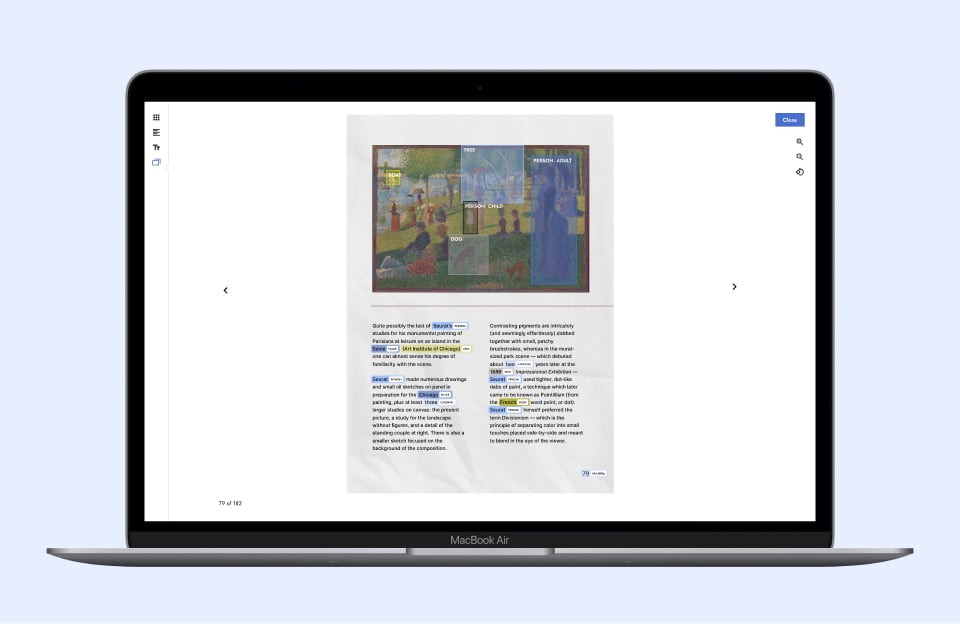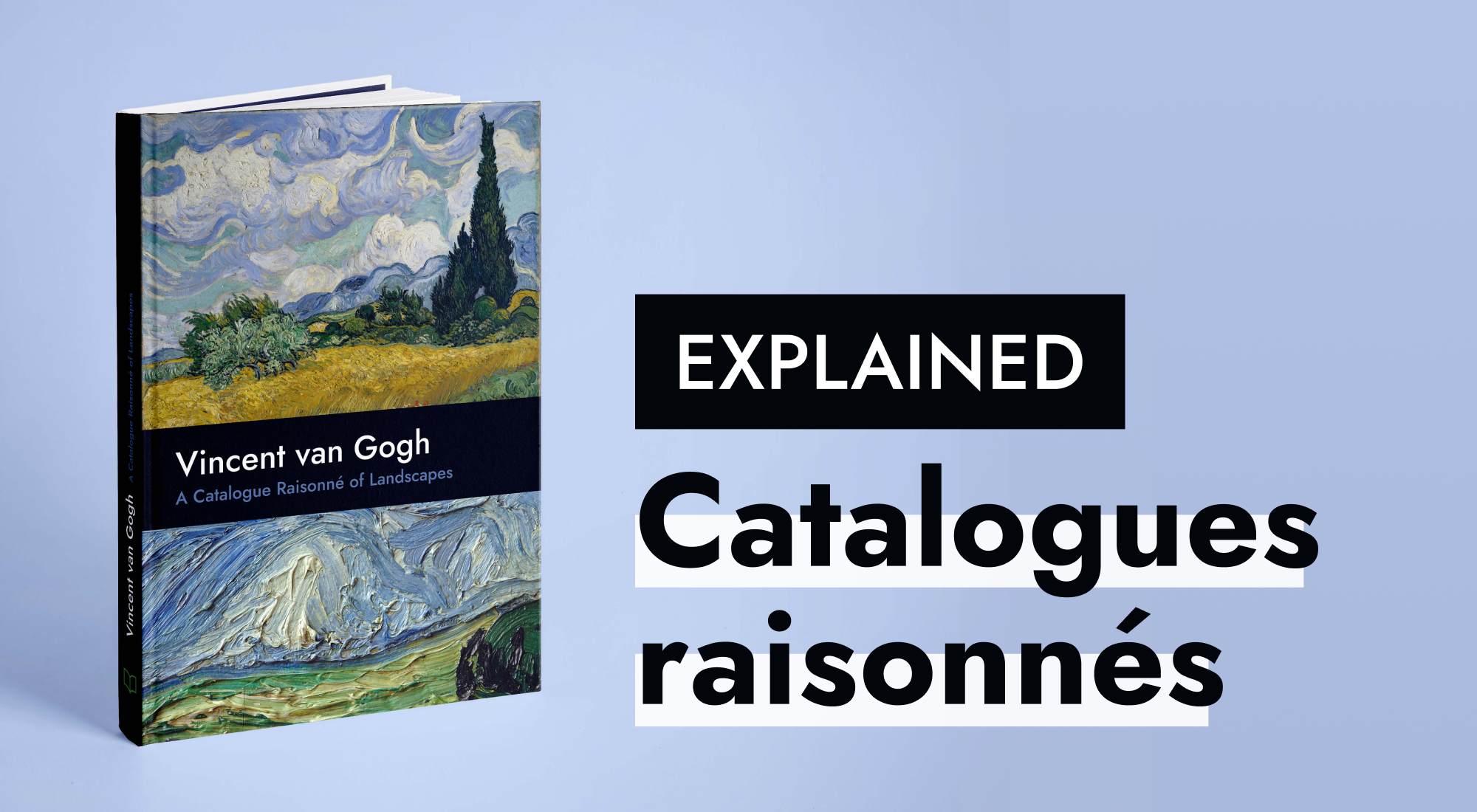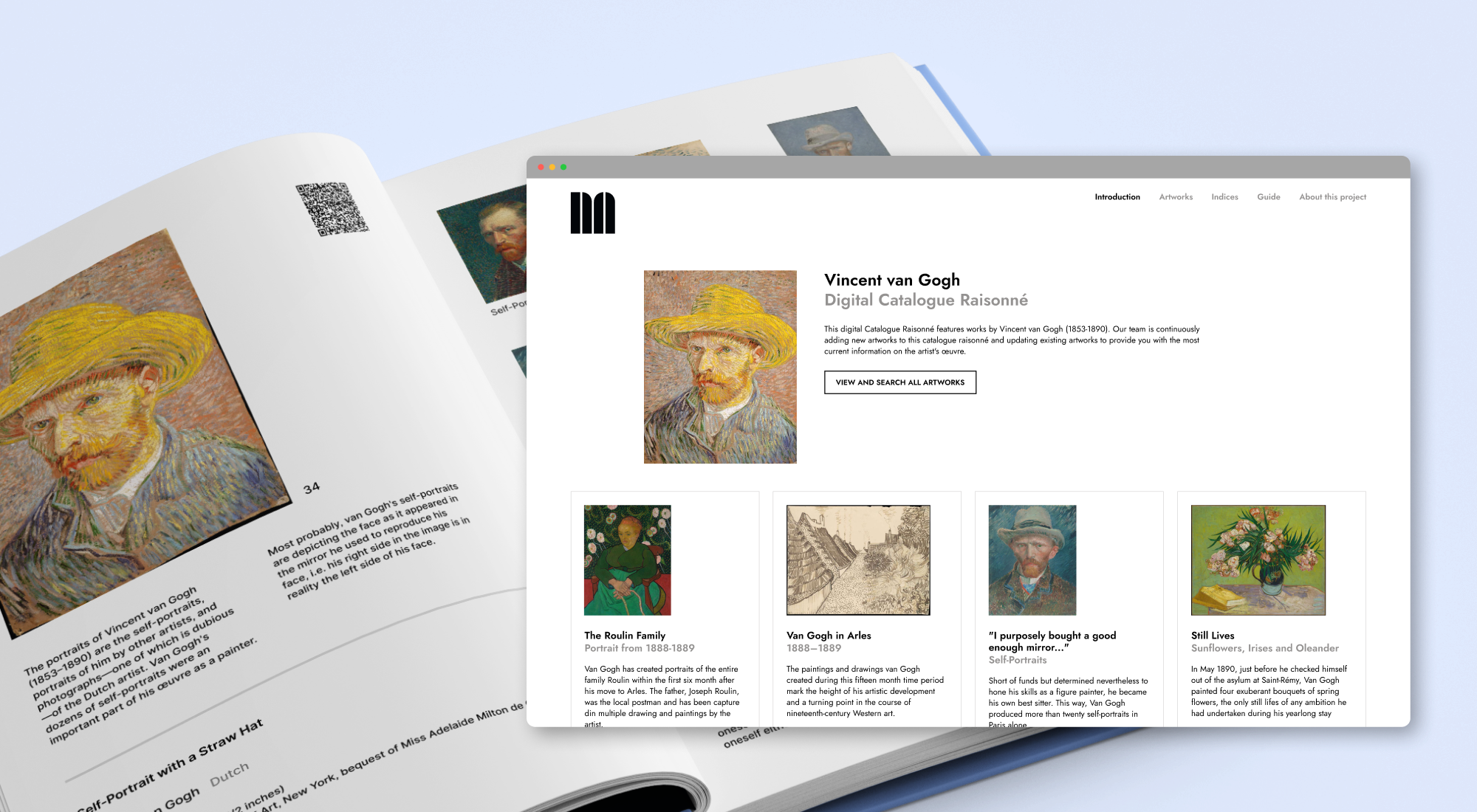How to create a digital catalogue raisonné
Compiling a digital catalogue raisonné often requires significant time, resources, and attention. But it doesn’t need to.
Upfront and ongoing costs make traditional printed catalogue raisonnés significant investments for creators and readers. Editing, printing, storing, and distributing these comprehensive records of an artist’s career can cost between $500,000 and $1M. When researchers discover new information or art works after the publication, the entire catalogue must be adjusted and reprinted, incurring additional costs. The purchase price corresponds to the production price, making catalogues raisonnés prohibitively expensive to purchase and limiting access to information. This result goes directly against the goal of a catalogue raisonné to protect an artist’s legacy and increase public awareness.
A digital catalogue raisonné offers an economical alternative that invites attention rather than limits it. An individual researcher can produce a digital catalogue raisonné for a fraction of the cost of conventional catalogues raisonnés, edit it at any time, and release it at low or no cost. Navigating.art's platform makes creating, structuring, and publishing a digital catalogue raisonné an efficient process. The team at Navigating.art also offers expertise and guidance to reduce complexity in the process.
Use this guide to help you through the five steps of creating and publishing a digital catalogue raisonné.
Organizing people, technology, and finances
The first step involves making a series of decisions about budgetary and staff requirements, including what skills and expertise are needed. Making these choices at the beginning of the process will increase your project’s success and save you time and money.
People: create a catalogue raisonné team
Gathering a team with the appropriate experience is critical. You’ll likely need a mix of the following profiles: researchers with knowledge about your artist; a collection manager, conservator, or archivist; a project manager, an editor, and a tech specialist, such as a computer developer. Use the expertise at your fingertips first, and empower the team you create to make decisions regarding digital tools, research methods, and budget.
If you aren’t sure where to start, begin by consulting a digital humanities expert at Navigating.art. Our staff can help guide your project from start to finish. Having several committed staff members of your own to work alongside Navigating.art is helpful for a successful publication.
After you have assembled your team, ask the following questions to ensure you’re set up for success:
- Does the team include someone with deep knowledge of the artist at the center of this catalogue raisonné?
- Does the team include someone who has the time to bring all of the disparate information together?
- Is the team empowered to make decisions about its budget and tools? If not, is there a system in place to ensure these decisions can be made quickly?
- Does the team include enough technical expertise?
Technology: choose your tools
In comparison with physical catalogue raisonnés, digital catalogues raisonnés are less expensive, quicker to publish, and simpler to maintain as researchers discover new information. These benefits make it financially possible to provide access to the catalogue raisonné at low or no cost, encouraging greater scholarly attention. All of these advantages depend on the technology used to create the digital catalogue raisonné.
A digital catalogue raisonné has three main technological components:
- Digital storage for images, art information, and research essays as data
- A program that an internal team can use to add and change data in the digital storage
- Public access to the data in its written and visual forms that readers can navigate intuitively (this is optional)
It’s possible to choose individual tools for each of these components or find an all-in-one solution.
Taking a custom approach may require hiring additional technical support, such as developers and web designers, to advise on the selection of a database and servers, build a program for the team to use for internal purposes and design and develop a publicly available website. This team will also need to support software updates and other inevitable changes for the life of the digital catalogue raisonné.
The Navigating.art platform is an all-in-one solution that includes all three components. It includes data storage, an intuitive user interface, and the option for public access — no developer or IT team required.
To help you evaluate the tool or tools you’re considering for your project, ask the following questions to ensure everything you need is in place:
- Does the solution fit your initial and ongoing budget?
- Do customers use this tool or tools to accomplish goals similar to mine?
- Does the solution fit the technical skill level of my team?
- Does the solution allow me to take advantage of the benefits of a digital catalogue raisonné?
- What are the maintenance and update requirements for the solution?
Finances: outline your budget
Each project requires an amount of financial support specific to its requirements. Creating a detailed plan and budget proposal reveals the size of the upfront and ongoing investment. It is also wise to consider image rights requirements at this stage so that you can budget them accordingly.
Here’s a list of considerations to get you started:
- Do you need to transport artworks or physical records?
- Do physical records need to be digitized?
- Do you need to migrate data from one platform to another?
- Are there any costs associated with image rights?
- Do you need to outsource any services?
- What is your technical budget?
When budgeting for labor costs, ask the following:
- Who is involved?
- What tasks will they undertake?
- How much time will each task take to complete?
- What will they be paid?
Navigating.art has experience creating budgets for digital archive and catalogue raisonné projects, and our team can help you validate your budget proposal. If you need to request more money for your project budget, we have suggestions to help you make your case in application to foundation and government funds.
Data discovery and initial entry for digital catalogue raisonné
Now that you have defined the people, technology, and finances your project needs, it’s time to gather your data and resources. First, assemble and structure the materials you already have.
Information relevant to your digital catalogue raisonné can often be found in the following resources:
- Your previous collection management system
- Formerly published catalogues raisonnés
- Physical or digital archives
- Exhibition catalogs
- Sale and purchase records
- Loan agreements
- Conservation documents
Remember to ask your colleagues for help. The information you’re looking for could be hiding in places you might not consider, including inside people’s heads. Institutional knowledge is great, but it works better for everyone when it's documented. Now’s the time to do that.
Familiarize yourself with best practices for working with data
The data discovery and initial entering phase is also when your team should begin
establishing a structure for stored data (i.e., collections, series, and files). This structure should be tailored to your particular project.
We suggest thinking about data on three levels as you establish its structure:
- Artwork. Each artwork in your digital catalogue raisonné has an information fingerprint. It is important to record this information in a standardized format using the same criteria. It is also important that each artwork has a unique identifier. It’s best to avoid numerical ordering systems, which can become cumbersome and outdated if new works are discovered. Navigating.art automatically generates unique identifiers for each new entry. This prevents the concordance issues associated with numerical systems.
- Context. The context refers to all of the information that coalesces around each artwork. The context could include exhibition histories, references in publications, and provenance records. Capturing this data in a structured manner makes navigating and finding connections from multiple starting points easier, which benefits internal and external research.
- Public. The public level refers to how data structure enables or hinders accessibility. Structuring data in the above ways transforms your digital catalogue raisonné into an interactive research tool. Making data as transparent as possible eases collaborations and helps you connect with various audiences. When and how much of your data you make public is always under your control and at your discretion.
This checklist can help you maintain best practices when working with data at each level:
- Designate a unique identification system for your artworks
- Establish a standardized criteria for capturing data about individual artworks
- Use your criteria to record data about all of your artworks
- Connect all contextual information to your artworks
- If they exist, establish connections between relational pieces of information
- Be transparent. It's ok to be honest about gaps in your information
- Record information in a way that is clear to any reader. Avoid jargon
- Decide what data you want to make available to third parties (its ok to come back to this step when you’re ready)
Well-structured data is easier to find and simpler to use. Capturing and consistently storing information provides a comprehensive image of a historical moment and allows you and external researchers to make surprising discoveries.
The team at Navigating.art can help you migrate data previously collected into the Navigating.art platform, which already sorts it into an easy-to-use structure. Guidance from a digital humanities expert enables you to understand how to use the platform every step of the way.
Researching for your digital catalogue raisonné
You will likely have uncovered some information gaps during the data discovery phase. All those gaps are filled in the research phase. Your team will use external sources to find and add the missing information.
Common places you may choose to search include:
- External archives (physical, digital, public, and private)
- Libraries
- Auction houses
- Family estates
- Museums
- Galleries
- Online publications
Keep in mind that primary sources may be fragmentary or hard to interpret. This material may require additional context or support from additional research.
When analyzing primary sources ask yourself:
- Is the source complete?
- Where is it from?
- Is it credible?
- Is it disputed?
- Is it verified?
- Does it require additional interpretation?
Document the source of each piece of information. This way anyone can comprehend your conclusions during final reviews or even years later. Uncertainty is inevitable when dealing with historical information, but, remember, transparency is key. Note any uncertainty in your evidence. Piecing together history is easier when done honestly and in collaboration. This is why the Navigating.art platform lets you mark most data fields as uncertain.
Securing rights to share your digital catalogue raisonné
A successful digital catalogue raisonné depends on the confirmation of data rights that protect its contents. Certain data – especially if it concerns personal information – may have restrictions on how it is allowed to be shared. If you choose to make the images of artworks available to the public, the correct licensing on all photos, paintings, sculptures, and archival materials must be open and accessible to readers.
Ask the following before your data becomes publicly available:
- When was the data produced?
- Is it already in the public domain?
- Is it under copyright?
- Do rights need to be obtained?
- Is there an owner, author, or creator that needs to be credited?
- Does your data contain personal information? If so, does it require special treatment?
Making your digital catalogue raisonné available to the public encourages education and scholarship, connects audiences who want to dive deeper with resources to do so, and positions you, your team, and your institution as essential custodians of our human history.
Publishing and what comes next
After planning, structuring digital storage, research, and securing rights, you’re ready to publish your digital catalogue raisonné. This might be when your IT team brings your technological tools together to craft a website with which the public can interact.
If you’re using the public access feature with the Navigating.art platform, this is when you click the button to publish your content. Remember: you have control over what people see at a granular level. You decide what information remains for internal use only and what goes to the world.
The more information, the better
The more art information available about diverse lives, practices, and artworks, the more the public can see the interconnectedness of our moment and those of the past. Digital catalogues raisonnés contribute significant details to these constellations, improve an artist's standing, and support the work of international researchers.
Researching, publishing and validating an artist’s work becomes more attainable thanks to digital tools like Navigating.art, which enables the creation of more catalogues raisonnés and promotes maintainable, trustworthy, and accessible cultural resources.


